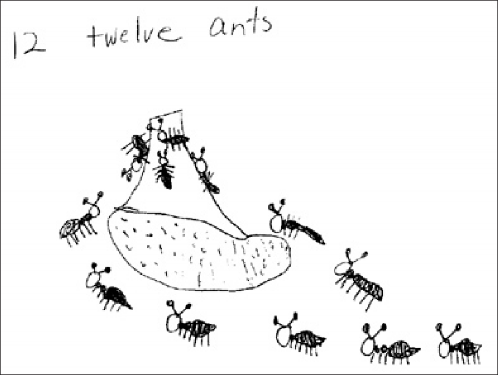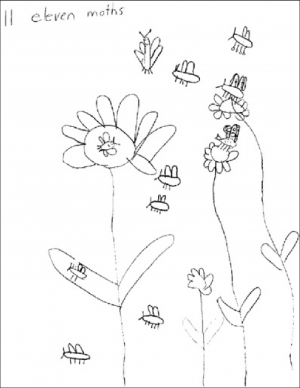The Icky Bug Counting Book
 All Classroom Lessons
All Classroom Lessons
A Lesson for First Grade

by Vicki Bachman
The end of the school year is both an exhilarating and a challenging time. Unless you’re in a year-round school, everyone is getting excited about the summer vacation ahead. Getting—and holding—the children’s attention requires planning, flexibility, and energy. A balance of novelty, familiar routines, and physical activity—customized to your class and personal preferences—can help keep learning experiences in the classroom moving along smoothly. This activity, based on Jerry Pallotta’s book The Icky Bug Counting Book (Charlesbridge, 1992), is most suitable for warm weather. The brightly illustrated nonfiction book provides information about a wide array of insects and is especially useful for helping extend work with larger numbers. The lesson is excerpted from Vicki Bachman’s First-Grade Math: A Month-to-Month Guide (Math Solutions Publications, 2003).
As is typical with counting books, the number of different kinds of insects in The Icky Bug Counting Book progresses from one page to the next. Of particular interest in this book is that the numbers extend to 26, introducing twenty-six different insects. Also of interest is that the book starts with zero.
Mathematically speaking, zero isn’t included in the set of counting numbers. (Counting numbers, also called natural numbers, include one, two, three, four, and so on.) However, zero still answers the question How many? and it’s important for children to become familiar with zero and comfortable with thinking about zero as a number. The book is a useful tool for supporting this learning.
As explained in the directions below, The Icky Bug Counting Book is a wonderful springboard for engaging children in an insect walk to learn about the insects in your area and then in making pages for their own class counting book about insects. The extensions suggest additional ideas for class-made books.
Instructions
-
Read The Icky Bug Counting Book aloud to the class.
-
Take a walk around the school with your class. If magnifying glasses are available, have the children bring them. Periodically encourage the children to search for insects. Speculate together about the types of insects that typically live in your environment and nearby.
-
When you get back to the classroom, help your students create a list of familiar insects.
-
Use the book or other resources (such as library books or Internet pictures) to assist the children in making simple number drawings of the insects on the list (e.g., 1 praying mantis, 11 moths, 12 ants). Some insects, such as ladybugs and ants, are relatively easy for most children to draw. Others—such as crickets and walking sticks—may be harder to draw but may also lead to whimsical depictions that the children will enjoy.
-
When the children have finished their number/insect drawings, collect them and make a class book. Share the book with visitors.

Figure 1. Yucheng drew one praying mantis.

Figure 2. Tobias drew 11 moths.

Figure 3. Irina drew 12 ants.
Extensions
Have students use their number/insect drawings to create a number-fact book. For instance, they could use 10 different insects and make a 1–10 book: one praying mantis, two ladybugs, three beetles, four butterflies, and so on. Each page could also include one true interesting fact about that particular insect.
Create an insect number book that not only counts insects but also includes numerical information about other details, such as number of legs, on each page.
From Online Newsletter Issue Number 16, Winter 2004–2005

Comments